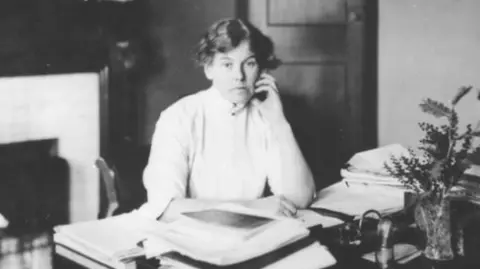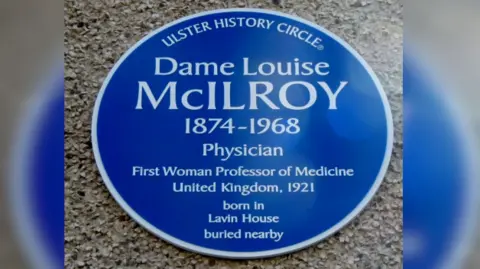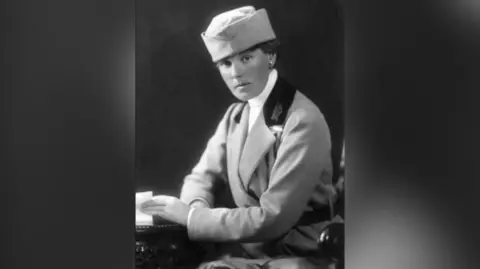Pioneering female doctor honoured in home town
 Glasgow University Archive Services
Glasgow University Archive ServicesThe first female professor of medicine in Britain and Ireland, from County Antrim, has been recognised with an Ulster History Circle blue plaque.
The pioneering Dame Louise McIlroy was the first woman to graduate in medicine from Glasgow University in 1898.
After being told "battlefields are no place for a woman", Dame Louise defied officials and joined the newly formed Scottish Women's Hospitals for Foreign Service in 1914, with her first posting to France.
Anne Louise McIlroy was born at Lavin House on 11 November 1874 in the townland of Knockahollet, Loughguile, and her father James was the local GP.
She was one of four girls, and one of her sisters Jane also studied medicine and Glasgow and became an eye doctor.
The family relocated from Loughguile to Ballycastle where her father became the district's medical officer.
 Ulster History Circle
Ulster History CircleAt the start of the World War One, Dame Louise served as a chief medical officer at a camp hospital in France. She was later sent to Serbia and then Salonika in Greece.
Dame Louise was faced with overcrowding, extreme weather, remoteness and disease as she cared for hundreds of patients in the tented hospitals.
After the war, she served as an assistant surgeon in Constantinople, now Istanbul, with the British Army Medical Corps.
In 1920 she was awarded the OBE for her war service. She was also awarded the Croix de Guerre by the French government.
In 1921, Dame Louise was appointed professor of Obstetrics and Gynaecology at the London School of Medicine for Women, now the Royal Free Hospital Medical School. Her salary, £2,000, was the highest paid to a woman for university work.
In 1929, her work was recognised and she was made a Dame for midwifery services.
Two years later Queen's University Belfast awarded her an honorary degree.
After retiring in 1934, Dame Louise came back to work at the start of World War Two to organise maternity services in Buckinghamshire.
After the war she returned to her retirement, living with her sister Jane in Ayrshire.
 Glasgow City Council
Glasgow City CouncilDame Louise McIlroy died in 1968 and was buried in her family's grave at Ballycastle Presbyterian Church, where the plaque has been unveiled.
Chris Spurr, chairman of the Ulster History Circle, said Dame Louise McIlroy was a pioneering doctor from County Antrim who devoted her career to advancing the areas of obstetrics, gynaecology and child welfare.
